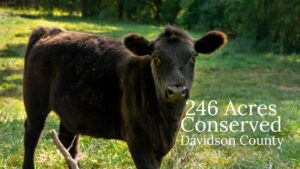
by Crystal Cockman
8/9/2017

On a trip to Washington, DC a few years ago, there was an area of the museum featuring the winners of a photography contest – Nature’s Best Photography Windland Smith Rice International Awards. There were many fantastic pictures including a polar bear shaking water off his fur, an osprey emerging from a lake, a gorilla looking down at a small duckling, a phosphorescent sea angel also known as a sea slug, a hummingbird at a stand-off with a small green snake, and many more. However the one that caught my eye was a flock of flamingos flying over snow-covered mountains with a menacing storm cloud behind them. The title was “Horns of Paine Mountains and Chilean Flamingos,” by Ben Hall, Hazel Grove, Cheshire, England, UK. Their bright color almost seemed unreal against that natural landscape, and it was breathtaking.
The word flamingo comes from Portuguese or Spanish flamengo, meaning, “flame-colored.” They don’t always have their bright pink feathers though. Baby flamingos are born with gray feathers. It’s their diet, primarily consisting of aquatic organisms – such as shrimp and algae – which are high in pigments called carotenoids, that gives them their reddish-pink hue.
There are six flamingo species: Greater flamingo (Phoenicopterus roseus), Lesser flamingo (Phoeniconaias minor), Chilean flamingo (Pheonicopterus chilensis), James’s flamingo (Phoenicoparrus jamesi), Andean flamingo (Phoenicoparrus andinus), and American Flamingo (Phoenicopterus ruber). The Greater flamingo is found in parts of Africa, Southern Europe, and South and Southwest Asia. The Lesser flamingo is found in Africa to Northwest India. The Chilean flamingo is found in temperate Southern South America. James’s flamingo and the Andean flamingo are found in the High Andes in Peru, Chile, Bolivia and Argentina. The American flamingo is found in the Caribbean islands, Caribbean Mexico, Belize and the Galapagos Islands.
At the beginning of nesting season, they perform mass courtships displays, where hundreds move together in a coordinated walk. A group of flamingos is known as a colony, flamboyance, flurry, regiment, or stand of flamingos. A fun fact: in ancient Rome, flamingo tongues were regarded as a delicacy.
Flamingos usually stand on one leg while the other is tucked beneath their body, but why they do so is not fully understood. One thought is that they are trying to conserve body heat, but the behavior also occurs in warm water or among flamingos that aren’t in water at all. Another theory is that it reduces muscle fatigue. The birds can passively support their body weight on one leg without using any muscle activity. This is counterintuitive because for humans standing on one leg seems more difficult than standing on two, but it’s likely due to the skeletal anatomy of flamingos that makes it easier for them. They even regularly fall asleep standing on one leg. I wouldn’t recommend trying that though.
Though we don’t have flamingos in our area, they do make it into Florida, so if you take a vacation there you might have a chance encounter. There are also flamingos at the NC Zoo if you wanted to see one up close closer to home. They are beautiful creatures, with many unique natural features. I’d like to see one in the wild at some point, something to add to my bucket list.